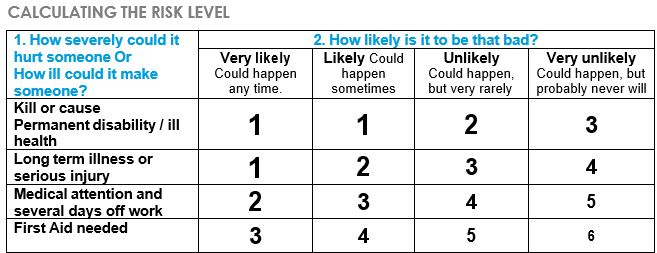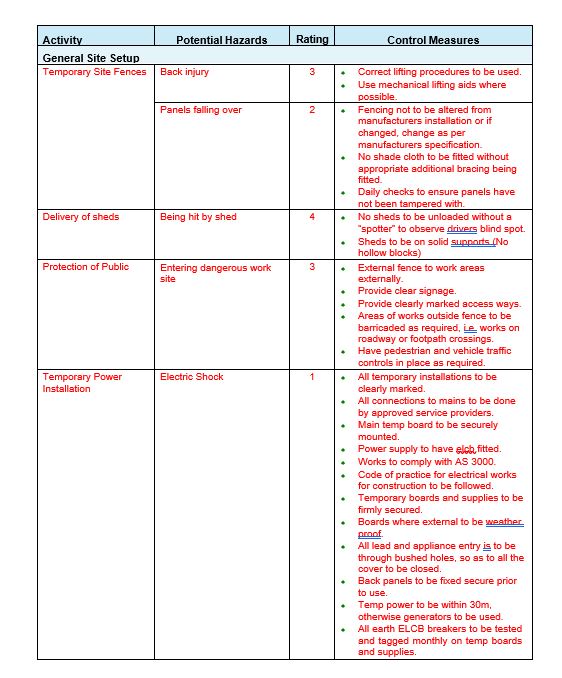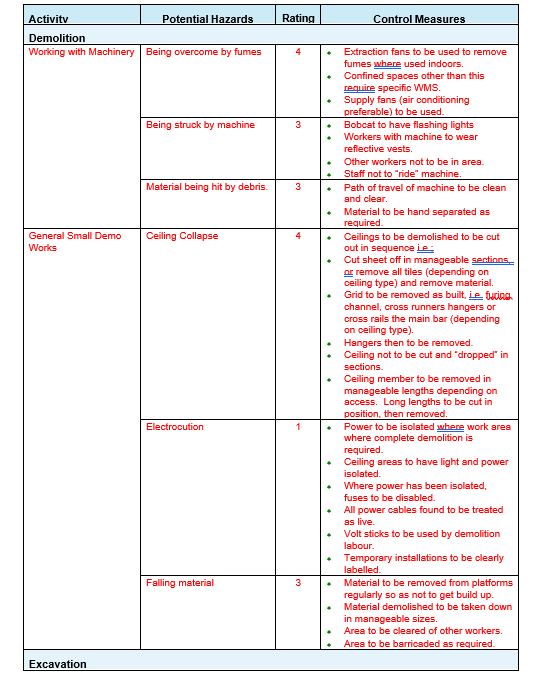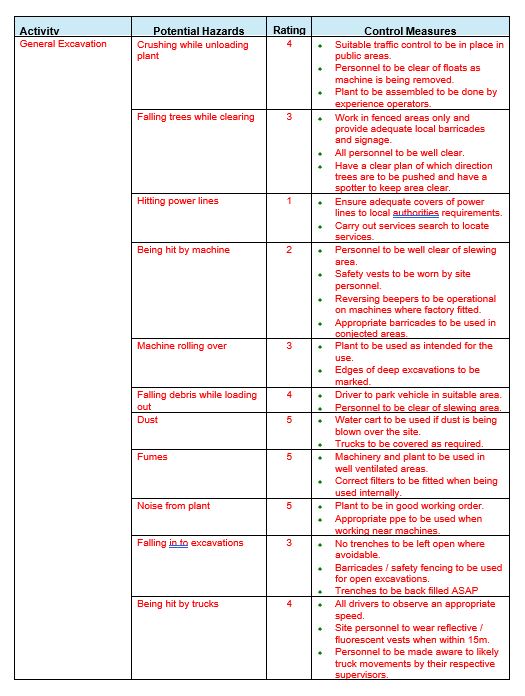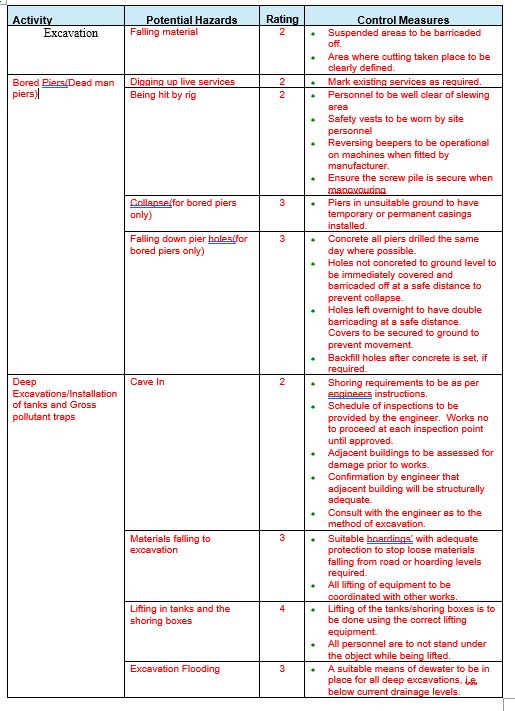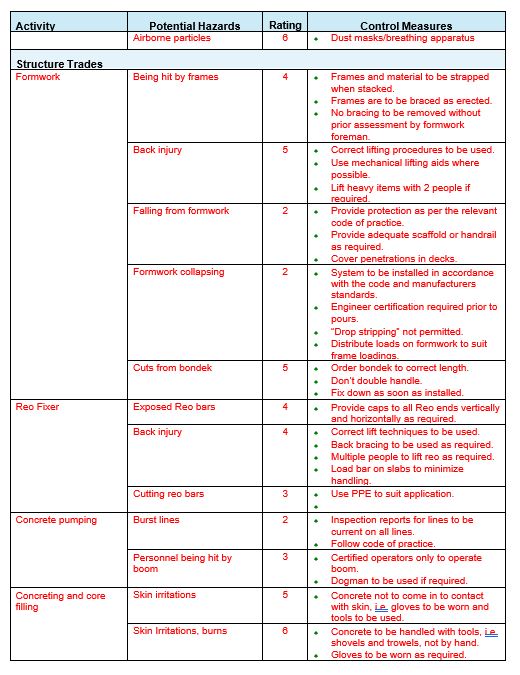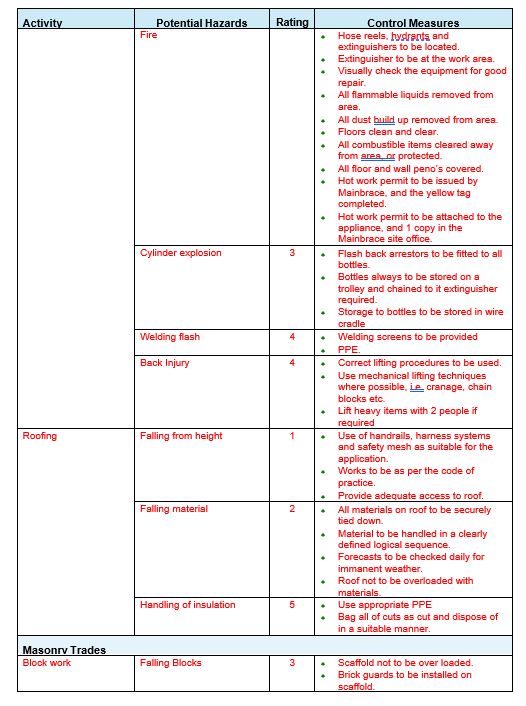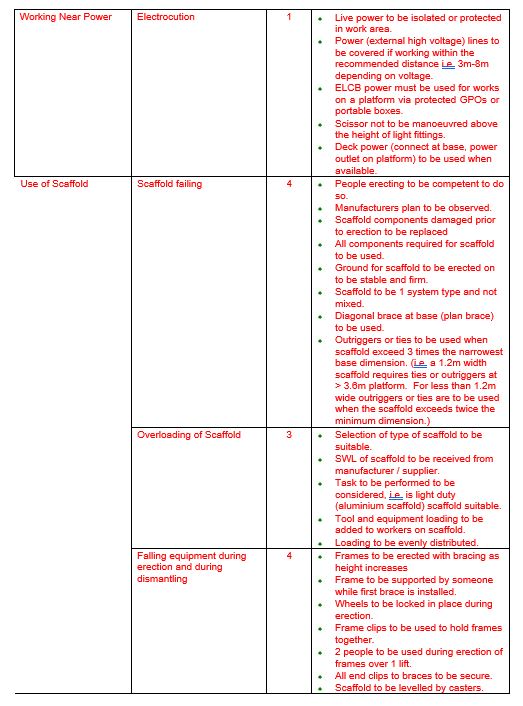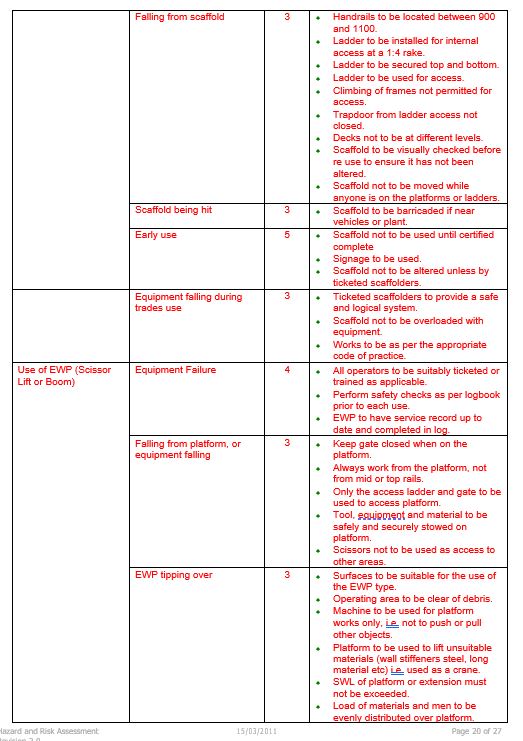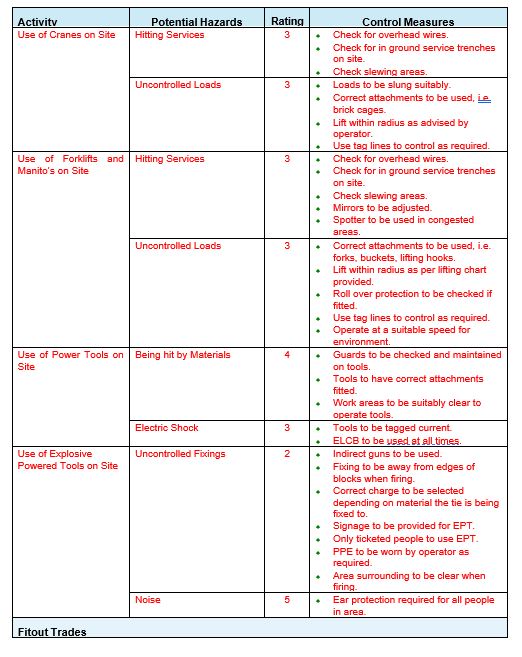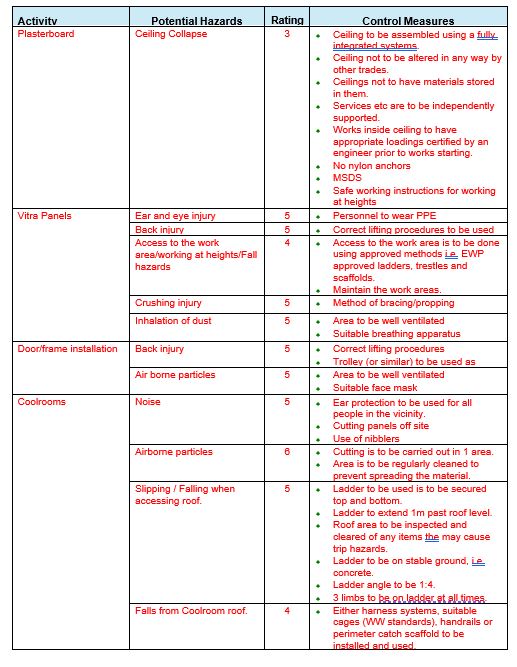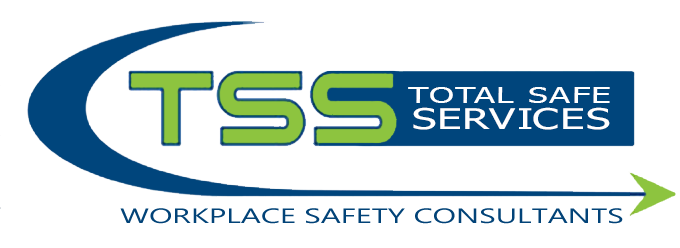Hazard & Risk Assessment
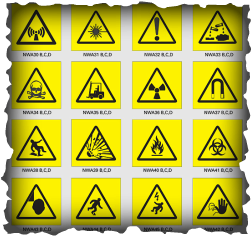
Training and Qualifications
Prior to start on site, all personnel of all companies, who will work on site, must under go a site- specific induction, and show evidence of such an induction.
All persons working onsite must have industry construction work card (white card)
Records of training on site are to be held by respective employers and available for inspection as required.
All operators of plant, machinery, earthmoving and heavy vehicle operators must have been trained and hold the appropriate certificate of competency.
All site personnel are to be trained in the use and understanding of trade specific Work Method
Statements (WMSs).
All personnel are to be trained by their employer in the use of PPE where required.
All site training and supervision will be carried out by a suitably experienced and qualified person.
Hazardous Substances
Hazardous substances, to be kept on site, are to be held in accordance with manufacturers recommendations, and as per the SDS for the product. SDS’s are to be on site prior to the delivery of hazardous substances. WHS Qld, codes of practices and guidelines will also be followed for the safe handling and storage on site.
Usage of all hazardous substances will be as per the manufacturer’s requirements. All precautions and usage of safety equipment will as per manufacturers requirements, and as per safe work method statements.
All hazardous substances must be logged on to site.
Some hazardous substances used on site may include:
- PVC jointing cement and cleaner
- Diesel Petrol Hydraulic oil
- Epoxy paint for steel Epoxy for dowel bars Cement products Lime
- LP gas
- Oxy and acetylene
- Refrigeration gas
- Slab curing compound
- Paints
- Thinners
- Medium density fibre board
- Floor sealers Construction adhesives
- Wall and roof insulation
- Cleaning Chemicals
Materials to be Stored
Materials to be stored on site will be kept neatly in areas as specified. Materials will not be stored on site for unreasonable lengths of time. Where applicable, materials will be stored on site as per manufacturers requirements.
Materials stored on site are to have SDS’s as applicable.
Other than those previously nominated as hazardous, some materials stored on site will be:
- Formwork frames, ply timber.
- Scaffold Concrete Blocks
- Spoil
- Engineered filling materials Electrical
- cable accessories Plumbing pipe
- Tools
- Gyprock
- Metal studwork
- Sprinkler pipes and accessories
- Air conditioning Duct work and
- Condensers
- Structural Steel Metalwork Timber
- Glass Windows
- Roof sheeting
- Ceramic tiles Doors frames
- Aluminium
Major Equipment
- Tracked earthmoving machines
- Rubber tyre earthmoving machines Oversized vehicles
- Articulated Vehicles
- Tracked boring machines
- Rubber tyre boring machines
- Mobile cranes, fixed set up, mobile set up
- Boom lifts & Scissor lifts
- Bobcat
- Backhoe
- Rollers and compactors
- Concrete pumps
- General handheld power tools
All equipment of this nature, and others as the project progresses will only be used by suitably ticketed and experienced operators as applicable.
Plant maintenance and certification must be evidenced and valid on all machines, prior to the equipment being used on site
Personal Protection Equipment
All site personnel as required will wear “PPE”.
Areas designated as construction areas have the minimum requirement for site workers to have:
- Safety boots
- High Vis Clothing
Reflective vests MUST be worn by all site personnel and visitors when in the vicinity of large machines.
Other PPE must be used where necessary or appropriate, which may include:
- Eye Protection
- Respiration Equipment
- Hand Protection
- Ear Protection Face Protection Safety
- Harness
All PPE required is to be outlined in the Work Method Statements and Safe Work Procedures.
A register of PPE is to be kept and made available on request and all PPE used is to comply with any relevant Australian Standards.
Hours of Work
Hours of work are as follows:
Monday – Friday
6.300am to 6.30pm
Saturday 6.30am – 6.30pm
Work outside these hours maybe permissible depending on the type of work and particular requirements of the client, contractor and site.
No work will be carried out outside these hours without the prior approval of IDC Developments and based on all relevant safety requirements being met. First aid requirements must also be met prior to all out of hour’s works.
Fire Prevention
Fire extinguishers are to be kept at major work faces and areas that are deemed high risk. Fire extinguishers are to be at all “hot works” areas.
All oxy cutting is to be completed 30min prior to the end of any shift. No oxy cutting will be permitted in overly dusty or messy areas. Hot works permits will be required to be issued for all works inside the mall area.
Smoke or thermal detectors must not be isolated without prior written permission.
Access/Egress to Site
Access to site will be only via marked access and roadways as required.
No fencing or hoarding is to be removed without prior approval with IDC Developments. Access to the main compound area is via the main entry as marked only.
All visitors to site must report to the site office or site supervisor.
Rubbish Removal
Rubbish removal and clean ups must happen on a daily basis, or more frequently if required. Rubbish is only to be placed in to bins on site, and not stockpiled unless approval is given from IDC Developments.
All hazardous materials are to be disposed of as per manufactures, Council, and EPA
requirements.
Risk Assessment
Those items identified in the hazard assessment are examined to determine the level of risk of injury or illness associated with each identified hazard, for the purpose of control. The priority for control increases as the established level of risk increases.
Risk Level Components
There are two Components to consider when assessing the risk associated with an identified hazard, they are:
Consequence
The outcome severity i.e. The potential number of persons that could be harmed and the nature of their injuries/illness and the potential damage to equipment affects the estimation of the consequence or outcome severity.
Probability
Estimate the probability, likelihood or chance that the chosen scenario will lead to the specific consequences being considered.
